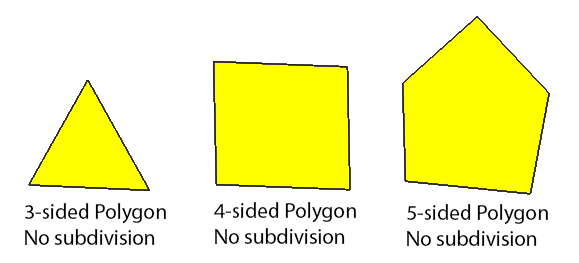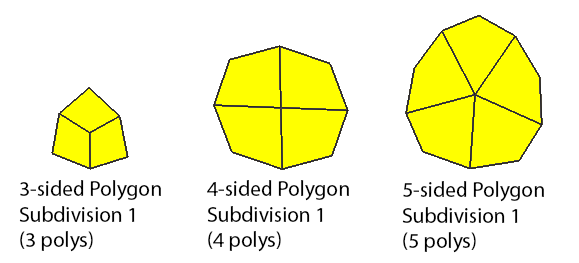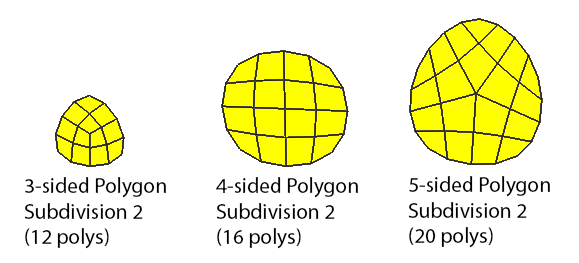How Subdivision Works
Subdivision can be applied to polygons that are made of 3 or more sides. Most content developers keep all or most of the polygons in their model to four sided polygons for optimum results in subdivision.
To explain how subdivision works, let’s start with a picture of three polygons: one with 3 sides, one with 4 sides, and one with 5 sides. With no subdivision, you see the polygons exactly how they have been created.

3, 4, and 5-sided polygons with no subdivision.
When you set the subdivision level to 1, subdivision smooths the model and gives the appearance as though it is made of more polygons. What basically happens is that a vertex is placed in the center of each polygon, and then that vertex connects at the center of each of the edges in the original polygon: Notice the following in the image that appears below:
The 3-sided polygon now looks like three four-sided polygons.
The 4-sided polygon now looks like four four-sided polygons.
The 5-sided polygon now looks like five four-sided polygons.

3, 4, and 5-sided polygons with subdivision setting of 1.
If you increase the level of subdivision one more time (to a setting of 2), another vertex is placed in the center of each polygon that was created at level 1. Because a level 1 subdivision created all four-sided polygons, what this will result in is that your model will appear to have four times the number of polygons as the preceding level.
Your original 3-sided polygon now looks like it has 12 polygons.
Your original 4-sided polygon now looks like it has 16 polygons.
Your original 5-sided polygon now looks like it has 20 polygons.
You’ll also notice that at a subdivision level of two, the outer edges of the polygon appear much smoother and rounder. This is most noticeable in the four-sided polygon. Where it originally appeared as a rectangular shape, it is now more like a circle.

3, 4, and 5-sided polygons with subdivision setting of 2.